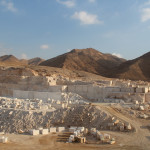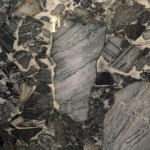Artificial intelligence and machine learning in cancer imaging Communications Medicine
How-to Guide: Deep Learning for Image Recognition Applications
As with the human brain, the machine must be taught in order to recognize a concept by showing it many different examples. If the data has all been labeled, supervised learning algorithms are used to distinguish between different object categories (a cat versus a dog, for example). If the data has not been labeled, the system uses unsupervised learning algorithms to analyze the different attributes of the images and determine the important similarities or differences between the images. One of the most widely adopted applications of the recognition pattern of artificial intelligence is the recognition of handwriting and text.
Even though the Krzywy Domek is so architecturally bizarre that it looks fake, Google’s “About this image” gives a strong suggestion that it’s real. In Deep Image Recognition, Convolutional Neural Networks even outperform humans in tasks such as classifying objects into fine-grained categories such as the particular breed of dog or species of bird. Learn about the evolution of visual inspection and how artificial intelligence is improving safety and quality. A Tensorflow model for text recognition (CNN + seq2seq with visual attention) available as a Python package and compatible with Google Cloud ML Engine. Hello AI World guide to deploying deep-learning inference networks and deep vision primitives with TensorRT and NVIDIA Jetson. Deep learning experts at the Hebrew University, Israel deployed CNNs to detect bone fractures in X-rays.
Other fields
In fact, in just a few years we might come to take the recognition pattern of AI for granted and not even consider it to be AI. One of the most popular and open-source software libraries to build AI face recognition applications is named DeepFace, which is able to analyze images and videos. To learn more about facial analysis with AI and video recognition, I recommend checking out our article about Deep Face Recognition. A custom model for image recognition is an ML model that has been specifically designed for a specific image recognition task. This can involve using custom algorithms or modifications to existing algorithms to improve their performance on images (e.g. model retraining). The most popular deep learning models, such as YOLO, SSD, and RCNN use convolution layers to parse a digital image or photo.
With deep learning, image classification and face recognition algorithms achieve above-human-level performance and real-time object detection. Many organizations don’t have the resources to fund computer vision labs and create deep learning models and neural networks. Companies such as IBM are helping by offering computer vision software development services. These services deliver pre-built learning models available from the cloud — and also ease demand on computing resources.
Train Object Detection AI with 6 lines of code
The healthcare industry is perhaps the largest benefiter of image recognition technology. This technology is helping healthcare professionals accurately detect tumors, lesions, strokes, and lumps in patients. It is also helping visually impaired people gain more access to information and entertainment by extracting online data using text-based processes. Our natural neural networks help us recognize, classify and interpret images based on our past experiences, learned knowledge, and intuition. Much in the same way, an artificial neural network helps machines identify and classify images.
Is Artificial Intelligence data mining the future of construction… – Hines
Is Artificial Intelligence data mining the future of construction….
Posted: Thu, 12 Oct 2023 07:00:00 GMT [source]
Creating a custom model based on a specific dataset can be a complex task, and requires high-quality data collection and image annotation. Compared to the traditional computer vision approach in early image processing 20 years ago, deep learning requires only engineering knowledge of a machine learning tool, not expertise in specific machine vision areas to create handcrafted features. While early methods required enormous amounts of training data, newer deep learning methods only need tens of learning samples. For the image recognition technology based on artificial intelligence, image matching classification is the last link.
Diagnosis and classification
Researchers have developed a large-scale visual dictionary from a training set of neural network features to solve this challenging problem. Facial analysis with computer vision allows systems to analyze a video frame or photo to recognize and health states, age, or ethnicity. Some photo recognition tools for social media even aim to quantify levels of perceived attractiveness with a score. For this purpose, the object detection algorithm uses a confidence metric and multiple bounding boxes within each grid box.
The level of autonomy ranges from fully autonomous (unmanned) vehicles to vehicles where computer-vision-based systems support a driver or a pilot in various situations. Examples of supporting systems are obstacle warning systems in cars, cameras and LiDAR sensors in vehicles, and systems for autonomous landing of aircraft. There are ample examples of military autonomous vehicles ranging from advanced missiles to UAVs for recon missions or missile guidance. Space exploration is already being made with autonomous vehicles using computer vision, e.g., NASA’s Curiosity and CNSA’s Yutu-2 rover. Appropriate training is required to allow users to judge whether an AI tool is fit for purpose before adoption into clinical practice, which would require radiologists to understand the principles of AI and how AI algorithms should be properly validated. Once the product or software has been validated as a certified medical device, a Data Protection Impact Assessment process must be initiated, usually at the local level, to safeguard data privacy—in Europe, this means compliance with the General Data Protection Regulations (GDPR).
These include imaging biobanks, which are virtual repositories of medical images; imaging biomarkers identified as endpoint surrogates; and population studies111. To address these points, improvements in algorithms, and community agreement on use of open-source software, phantoms and standardized approaches101 are required for radiomics to reach its full potential. One area where AI/ML could be particularly transformative is precision oncology, or the selection of a patient’s therapy based on their tumour’s molecular profile. Precision oncology is likely to benefit from integrated diagnostics84,85 (e.g. radiogenomics, which combines radiomics and genomics analyses) to provide robust computational tools for investigating cancer biology, as well as for predicting treatment response (Fig. 5). The solution includes large-scale structured data collection (from multiple institutions) that deals with cyber-security and privacy issues and supports continuous learning. At present, the main challenge is bridging the gap between emerging AI tools and clinical practice, by first performing well-validated clinical research studies of such applications.
Using an image recognition algorithm makes it possible for neural networks to recognize classes of images. Once the deep learning datasets are developed accurately, image recognition algorithms work to draw patterns from the images. An Image Recognition API such as TensorFlow’s Object Detection API is a powerful tool for developers to quickly build and deploy image recognition software if the use case allows data offloading (sending visuals to a cloud server).
How to train AI to recognize images and classify – AI image recognition
Image recognition is the ability of computers to identify and classify specific objects, places, people, text and actions within digital images and videos. As an application of computer vision, image recognition software works by analyzing and processing the visual content of an image or video and comparing it to learned data, allowing the software to automatically “see” and interpret what is present, the way a human might be able to. The recognition pattern allows a machine learning system to be able to essentially “look” at unstructured data, categorize it, classify it, and make sense of what otherwise would just be a “blob” of untapped value. Applications of this pattern can be seen across a broad array of applications from medical imaging to autonomous vehicles, handwriting recognition to facial recognition, voice and speech recognition, or identifying even the most detailed things in videos and data of all types. In past years, machine learning, in particular deep learning technology, has achieved big successes in many computer vision and image understanding tasks.
ScaleAI is selling artificial intelligence to the U.S. military to compete … – The Washington Post
ScaleAI is selling artificial intelligence to the U.S. military to compete ….
Posted: Sun, 22 Oct 2023 14:00:00 GMT [source]
This technology has rapidly advanced over the past decade, thanks to the increasing availability of vast datasets, powerful computational resources, and sophisticated machine learning algorithms. Image recognition is now a fundamental component in a wide range of applications across various industries, from healthcare and retail to automotive and entertainment. Over the last century, there has been an extensive study of eyes, neurons, and brain structures devoted to the processing visual stimuli in both humans and various animals.
The result of image recognition is to accurately identify and classify detected objects into various predetermined categories with the help of deep learning technology. Deep learning image recognition of different types of food is applied for computer-aided dietary assessment. Therefore, image recognition software applications have been developed to improve the accuracy of current measurements of dietary intake by analyzing the food images captured by mobile devices and shared on social media. Hence, an image recognizer app is used to perform online pattern recognition in images uploaded by students. In such applications, image recognition software employs AI algorithms for simultaneous face detection, face pose estimation, face alignment, gender recognition, smile detection, age estimation, and face recognition using a deep convolutional neural network. While computer vision APIs can be used to process individual images, Edge AI systems are used to perform video recognition tasks in real-time, by moving machine learning in close proximity to the data source (Edge Intelligence).
- As for discrete variables, classification models such as Naïve Bays, Support Vector Machines, Decision Trees, Random Forests, KNN (k-nearest neighbours), Generalized Linear Models, Bagging and others can be used16.
- Introducing the use of a new AI tool within a healthcare system may proceed with initial caution by working with the supplier to undertake a mutually agreed trial period.
- Harness segmentation models to delineate and differentiate between various elements within an image, facilitating nuanced understanding and analysis.
- Computer vision is an interdisciplinary field that deals with how computers can be made to gain high-level understanding from digital images or videos.
- The healthcare industry is perhaps the largest benefiter of image recognition technology.
It provides a way to avoid integration hassles, saves the costs of multiple tools, and is highly extensible. However, deep learning requires manual labeling of data to annotate good and bad samples, a process called image annotation. The process of learning from data that is labeled by humans is called supervised learning.
Hardware and software with deep learning models have to be perfectly aligned in order to overcome costing problems of computer vision. Computer vision trains machines to perform these functions, but it has to do it in much less time with cameras, data and algorithms rather than retinas, optic nerves and a visual cortex. Because a system trained to inspect products or watch a production asset can analyze thousands of products or processes a minute, noticing imperceptible defects or issues, it can quickly surpass human capabilities. During the image recognition process, the targets need to be monitored in sequence at first relying on AI image recognition technology. Once the threshold is found to be exceeded, an audible alarm will be issued, the event and time will be recorded in the database, and the image will be saved simultaneously, so that the parameters of image and relevant databases are linked together for later call and view.
- Once the product or software has been validated as a certified medical device, a Data Protection Impact Assessment process must be initiated, usually at the local level, to safeguard data privacy—in Europe, this means compliance with the General Data Protection Regulations (GDPR).
- In fact, image recognition is an application of computer vision that often requires more than one computer vision task, such as object detection, image identification, and image classification.
- Now that you have understand how to prepare own image dataset for training artificial intelligence models, we will now proceed with guiding you training an artificial intelligence model to recognize professionals using ImageAI.
Read more about https://www.metadialog.com/ here.





